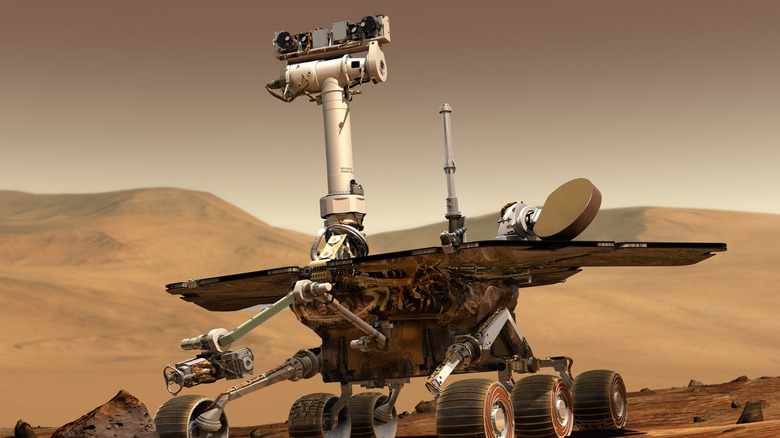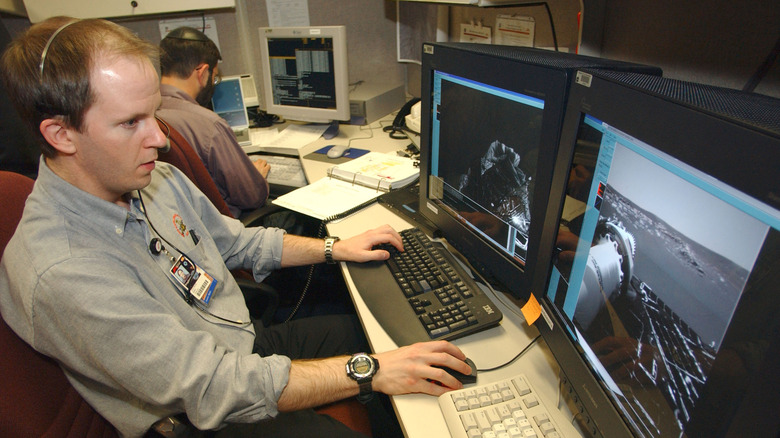How The Mars Rover Opportunity Was A Scientific Jackpot For NASA
Earth and Mars trace their elliptical paths around the sun like two runners around a track, and Earth has the inside lane. This means that they're moving out of sync, with the two planets going through cycles of getting closer and further apart every few years. And back in 2003, Earth and Mars were as close together as they'd been in 60,000 years (via NASA). Conditions were perfect to launch two Mars Exploration Rovers: Spirit and Opportunity.
Unlike the more modern Perseverance rover — which is nuclear-powered — Opportunity relied on solar panels for its electricity. With Mars being notorious for its wind storms, there was an understanding that the solar panels were likely to become covered in Martian dust before too long, leaving the rover's battery to drain down and unable to recharge. The mission was expected to last for just 90 Martian days, with Opportunity traveling around 0.6 miles in that time.
Instead, Opportunity traveled 45 times further and lasted 60 times longer by the time it finally shut down for good on the Martian plains of Perseverance Valley in June of 2018, according to NASA. This far exceeded what anyone had thought the rover was capable of achieving, and all of that extra time and distance left a lot more room for scientific discovery.
Opportunity of a lifetime
As it turned out, those dust storms that were expected to cover Opportunity's solar panels were actually strong enough to blow the dust away, providing them with a regular cleaning. And it's a good thing, too, because from a scientific standpoint, Opportunity hit the ground running — or roving, as it were.
Opportunity made a major discovery before it even left its landing site in Eagle Crater: small spheres of hematite. On Earth, hematite forms in a wet environment, meaning that Opportunity had found solid evidence of a watery past on Mars, according to NASA. While Mars is a frigid, desolate desert today, scientists had long suspected it was once more Earthlike. Within its first few weeks on Mars, Opportunity was lending credence to this theory, and its work was just getting started.
Over the next 14 years, Opportunity snapped over 228,000 raw images that are all publicly available now. It analyzed the minerals from 52 rocks and inspected 72 additional locations; it set the record for the longest distance traveled in a single day on Mars; and in Endeavour Crater, it found evidence of ancient water that would have been drinkable (via NASA). And all this from a rover that was expected to last three months.
In the end, a dust storm did in fact disable Opportunity — though exactly how isn't known — and after over a thousand failed attempts to reestablish communication, the mission came to a close. But Opportunity sure lived a good life.

